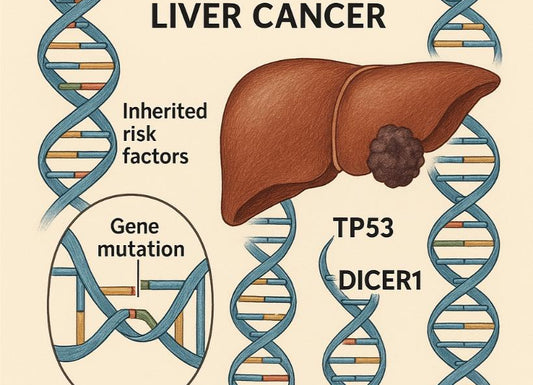Can Type 2 Diabetes Turn Into Type 1?
 Written By
Abel Tamirat, MD
Written By
Abel Tamirat, MD

Type 1 and Type 2 diabetes are two distinct conditions, but because they share similar symptoms and long-term effects, many people wonder: Can Type 2 diabetes turn into Type 1?
The short answer is no — Type 2 diabetes cannot become Type 1 diabetes. However, certain forms of diabetes can blur the lines between the two, and some people with Type 2 may later develop characteristics that resemble Type 1. Understanding the differences helps clarify how these conditions develop and how they are treated.
The Key Difference Between Type 1 and Type 2 Diabetes
Both conditions involve problems with insulin — the hormone that helps move glucose (sugar) from the blood into your cells for energy.
-
Type 1 diabetes is an autoimmune disease. The body’s immune system attacks and destroys the insulin-producing beta cells in the pancreas. People with Type 1 produce little or no insulin and must take insulin for life.
-
Type 2 diabetes develops when the body becomes resistant to insulin or doesn’t produce enough to maintain normal blood sugar levels. It’s often related to genetics, weight, or lifestyle factors.
So while both lead to high blood sugar, their causes — and therefore their treatments — are different.
Read on to explore our complete guide to at-home kidney function testing and how it works.
Can Type 2 Diabetes Turn Into Type 1?

No, one type does not “turn into” the other because they have different origins. However, Type 2 diabetes can progress and worsen over time, leading to insulin dependence. This can make it look similar to Type 1 diabetes, but the underlying mechanism remains different.
For example, many people with advanced Type 2 diabetes eventually require insulin injections because their pancreas becomes too weak to produce enough insulin — not because the immune system destroyed it.
When It Might Seem Like Type 2 Turns Into Type 1
There are a few scenarios where confusion arises:
1. Misdiagnosis
In adults, especially those who are not overweight, Type 1 diabetes is sometimes mistaken for Type 2. If blood sugars remain uncontrolled despite oral medications, a doctor may later find that the patient actually has Type 1 or a related form of autoimmune diabetes.
2. LADA (Latent Autoimmune Diabetes in Adults)
Also known as Type 1.5 diabetes, LADA shares features of both types. It starts in adulthood and progresses slowly, often first appearing like Type 2. Over time, however, the immune system destroys insulin-producing cells, and insulin therapy becomes necessary.
People with LADA may initially control their blood sugar with diet and pills, but within months or years, they require insulin — similar to Type 1.
3. Pancreatic Damage
Chronic pancreatitis, surgery, or other pancreatic diseases can damage insulin-producing cells. This type of diabetes, sometimes called Type 3c, can occur in people previously diagnosed with Type 2 and may mimic features of Type 1.
Read on in our article about glucose in urine to learn about causes and symptoms.
Signs That Type 2 Diabetes May Be Something Else
If you have Type 2 diabetes but your blood sugar remains high despite following treatment, it’s worth asking your doctor about further testing.
Possible indicators that your diabetes may not be classic Type 2 include:
-
Rapid, unexplained weight loss.
-
Normal or lean body weight.
-
High blood sugar despite taking oral medications.
-
The need for insulin early after diagnosis.
-
A family history of autoimmune diseases.
Blood tests that measure autoantibodies (such as GAD or ICA) and C-peptide levels can help determine whether your pancreas is still producing insulin or if your immune system is attacking it.
How Type 2 Diabetes Progresses Over Time
While Type 2 cannot turn into Type 1, it can progress to a point where insulin therapy becomes necessary.
This happens because:
-
The pancreas becomes exhausted from producing extra insulin.
-
Insulin resistance worsens due to ongoing inflammation or weight gain.
-
Beta cells lose function permanently over time.
This stage is sometimes referred to as insulin-dependent Type 2 diabetes — not because it became Type 1, but because it now requires similar management.
Treatment Differences Between Type 1 and Type 2 Diabetes

Type 1 Diabetes:
-
Requires insulin injections or an insulin pump from diagnosis.
-
Care focuses on balancing insulin with food and activity.
Type 2 Diabetes:
-
Often begins with diet, exercise, and oral medications like metformin.
-
May later include injectable medications or insulin if blood sugar remains high.
People with LADA or Type 3c may start on pills but typically transition to insulin within a few years.
Read on in our overview of the Ribbon Checkup urine test to see how home testing can support your health.
Managing Type 2 Diabetes to Prevent Progression
While it doesn’t turn into Type 1, Type 2 diabetes can worsen if not managed properly. You can slow or even reverse early damage with consistent care.
Key steps include:
-
Maintaining a healthy weight.
-
Eating balanced meals rich in fiber and low in added sugars.
-
Exercising regularly.
-
Taking medications as prescribed.
-
Monitoring blood sugar and A1C levels regularly.
-
Managing stress and getting adequate sleep.
When to Talk to Your Doctor

If you have Type 2 diabetes and notice that your blood sugar is becoming harder to control — even with diet and medication — talk to your doctor. They may run tests to check for autoimmune markers or assess whether your pancreas is still producing insulin.
Early diagnosis of LADA or other non-Type 2 forms allows for the right treatment plan and reduces complications.
Read on in our full guide to at-home liver tests to learn what your results really mean.
The Bottom Line
Type 2 diabetes cannot turn into Type 1, but it can progress to the point that insulin therapy becomes necessary. Sometimes, adults thought to have Type 2 may actually have LADA, a slow-onset autoimmune form of diabetes.
Understanding which type you have ensures the right treatment — and the best chance to protect your long-term health.
With healthy habits, medical care, and regular monitoring, most people with diabetes can live full, active lives.
Want to monitor your blood sugar at home?
You can take an at-home metabolic and diabetes risk test through Ribbon Checkup and get results in days.
Related Resources
Want to understand more about how diabetes affects your body? Try these guides:
-
Is Feeling Sleepy After Eating a Sign of Diabetes? – Digestive and fatigue signs explained.
-
Diabetes and Swollen Feet – Learn how diabetes impacts circulation.
-
Does Diabetes Cause Hair Loss? – Explore lesser-known complications.
References
American Diabetes Association. (2024). Insulin resistance and diabetes. https://diabetes.org/health-wellness/insulin-resistance
Centers for Disease Control and Prevention. (2024, May 31). About insulin resistance and type 2 diabetes. https://www.cdc.gov/diabetes/about/insulin-resistance-type-2-diabetes.html
Cleveland Clinic. (2025, June 2). Type 3c diabetes. https://my.clevelandclinic.org/health/diseases/24953-type-3c-diabetes
Cleveland Clinic. (2025, August 27). Latent autoimmune diabetes in adults (LADA). https://my.clevelandclinic.org/health/diseases/lada-diabetes
Cleveland Clinic. (2025, September 11). Insulin resistance. https://my.clevelandclinic.org/health/diseases/22206-insulin-resistance
Cui, Y., & Andersen, D. K. (2011). Pancreatogenic diabetes: Special considerations for management. Pancreatology, 11(3), 279-294. https://doi.org/10.1159/000329188
Diabetes Genes. (n.d.). C-peptide and islet autoantibody testing. https://www.diabetesgenes.org/nongenetictests/
Diabetes.co.uk. (2023, October 29). GAD antibody test. https://www.diabetes.co.uk/gad-antibody-test.html
Ewald, N., & Bretzel, R. G. (2013). Diabetes mellitus secondary to pancreatic diseases (Type 3c) - Are we neglecting an important disease? European Journal of Internal Medicine, 24(3), 203-206. https://doi.org/10.1016/j.ejim.2012.12.017
Ewald, N., Kaufmann, C., Raspe, A., Kloer, H. U., Bretzel, R. G., & Hardt, P. D. (2012). Prevalence of diabetes mellitus secondary to pancreatic diseases (type 3c). Diabetes/Metabolism Research and Reviews, 28(4), 338-342. https://doi.org/10.1002/dmrr.2260
Hart, P. A., Bellin, M. D., Andersen, D. K., Bradley, D., Cruz-Monserrate, Z., Forsmark, C. E., Goodarzi, M. O., Habtezion, A., Korc, M., Kudva, Y. C., Pandol, S. J., Yadav, D., & Chari, S. T. (2016). Type 3c (pancreatogenic) diabetes mellitus secondary to chronic pancreatitis and pancreatic cancer. The Lancet Gastroenterology & Hepatology, 1(3), 226-237. https://doi.org/10.1016/S2468-1253(16)30106-6
Kahn, S. E., Hull, R. L., & Utzschneider, K. M. (2006). Mechanisms linking obesity to insulin resistance and type 2 diabetes. Nature, 444(7121), 840-846. https://doi.org/10.1038/nature05482
Leslie, R. D., Evans-Molina, C., Freund-Brown, J., Buzzetti, R., Dabelea, D., Gillespie, K. M., Goland, R., Jones, A. G., Kacher, M., Phillips, L. S., Rolandsson, O., Wardian, J. L., & Dunne, J. L. (2021). Adult-onset type 1 diabetes: Current understanding and challenges. Diabetes Care, 44(11), 2449-2456. https://doi.org/10.2337/dc21-0770
Mishra, R., Hodge, K. M., Cousminer, D. L., Leslie, R. D., & Grant, S. F. A. (2018). A global perspective of latent autoimmune diabetes in adults. Trends in Endocrinology & Metabolism, 29(9), 638-650. https://doi.org/10.1016/j.tem.2018.06.001
Narendran, P., Estella, E., & Fourlanos, S. (2021). Immunology of type 1 diabetes. QJM: An International Journal of Medicine, 114(12), 843-850. https://doi.org/10.1093/qjmed/hcab250
Petersen, M. C., & Shulman, G. I. (2018). Mechanisms of insulin action and insulin resistance. Physiological Reviews, 98(4), 2133-2223. https://doi.org/10.1152/physrev.00063.2017
Rickels, M. R., & Norris, A. W. (2022). Diagnosis and treatment of diabetes mellitus in chronic pancreatitis. World Journal of Gastroenterology, 18(42), 6018-6024. https://doi.org/10.3748/wjg.v18.i42.6018
Sapra, A., & Bhandari, P. (2024, March 1). Latent autoimmune diabetes. In StatPearls. StatPearls Publishing. https://www.ncbi.nlm.nih.gov/books/NBK557897/
Seaquist, E. R., Anderson, J., Childs, B., Cryer, P., Dagogo-Jack, S., Fish, L., Heller, S. R., Rodriguez, H., Rosenzweig, J., & Vigersky, R. (2013). Hypoglycemia and diabetes: A report of a workgroup of the American Diabetes Association and The Endocrine Society. Diabetes Care, 36(5), 1384-1395. https://doi.org/10.2337/dc12-2480
Taylor, R. (2012). Insulin resistance and type 2 diabetes. Diabetes, 61(4), 778-779. https://doi.org/10.2337/db12-0073
Tuomi, T., Santoro, N., Caprio, S., Cai, M., Weng, J., & Groop, L. (2014). The many faces of diabetes: A disease with increasing heterogeneity. The Lancet, 383(9922), 1084-1094. https://doi.org/10.1016/S0140-6736(13)62219-9
University Hospitals. (n.d.). Type 1.5 diabetes / Latent autoimmune diabetes in adults (LADA). https://www.uhhospitals.org/services/endocrinology-services/conditions-and-treatments/diabetes/conditions-and-treatments/latent-autoimmune-diabetes-in-adults
WebMD. (2023, March 4). LADA (Type 1.5) and MODY diabetes: Symptoms and treatment. https://www.webmd.com/diabetes/mody-lada-diabetes-symptoms-treatment
Wilcox, N. S., Rui, J., Hebrok, M., & Herold, K. C. (2016). Life and death of β cells in type 1 diabetes: A comprehensive review. Journal of Autoimmunity, 71, 51-58. https://doi.org/10.1016/j.jaut.2016.02.001

Dr. Abel Tamirat is a licensed General Practitioner and ECFMG-certified international medical graduate with over three years of experience supporting U.S.-based telehealth and primary care practices. As a freelance medical writer and Virtual Clinical Support Specialist, he blends frontline clinical expertise with a passion for health technology and evidence-based content. He is also a contributor to Continuing Medical Education (CME) programs.



